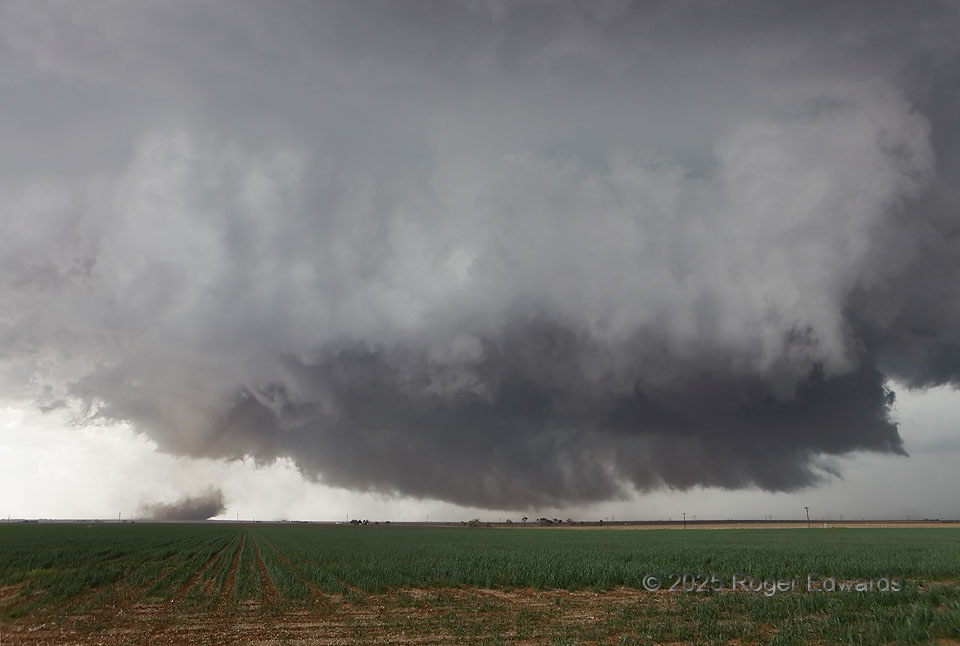Southward-sagging boundaries generally are the bane of storm observers, for the cool (north) side tends to undercut the supercell, keeping its tornado potential limited to none. Not here! In this case, the storm right-moved southward in step with the boundary at about 5–10 knots, before both ultimately stalled, after producing at least three tornadoes. Yes, the boundary and its ribbon of cyclonic vorticity helped. This was the second, most visible and memorable of the supercell’s tornadoes, all produced inside two hours out of its ten-hour lifespan. This tornado seemed anchored to the south end of a large mesocyclone. During most of the tornado’s lifespan, it stayed on the south side of the broader circulation, instead of orbiting around or centering itself in the middle as it typical, for reasons known only to the atmosphere and its maker and not to me. The broader wall cloud rotated strongly, both before and after this tornado; in fact, all the tornadoes I saw from this supercell occurred with this same mesocyclone, but clearly were separated in space and time. Dust left over from a short-lived first tornado still lingered near the middle background.
2 S Beck TX (25 Apr 25) Looking WNW
33.9242, -102.5371
